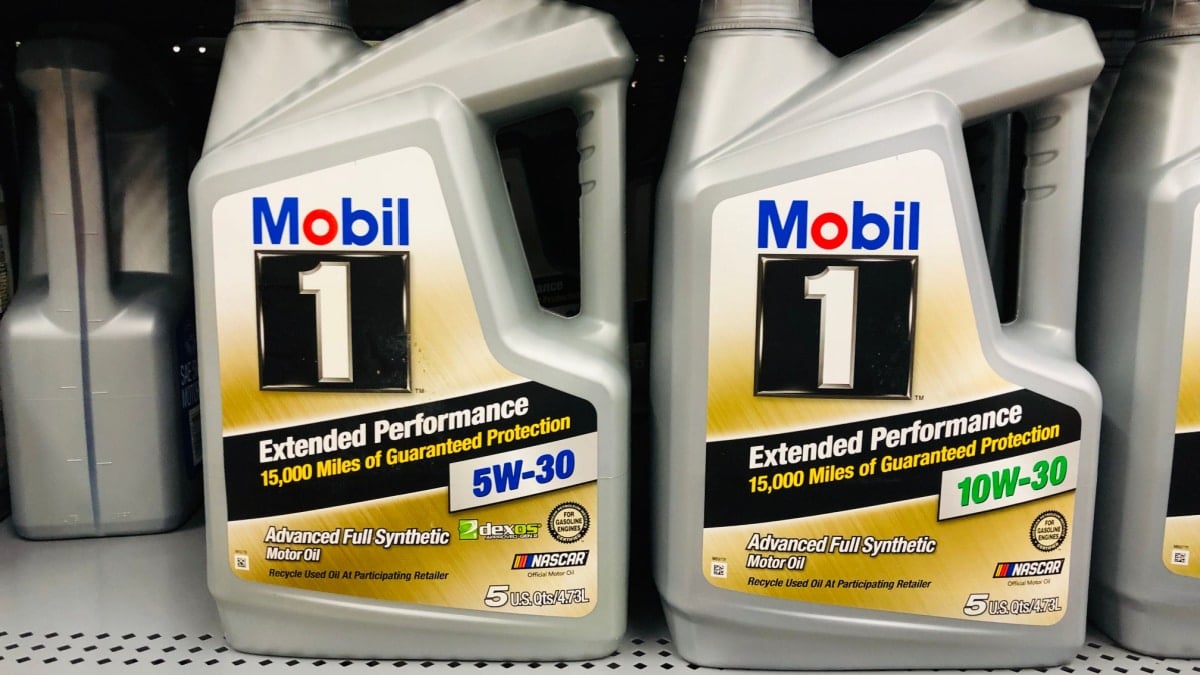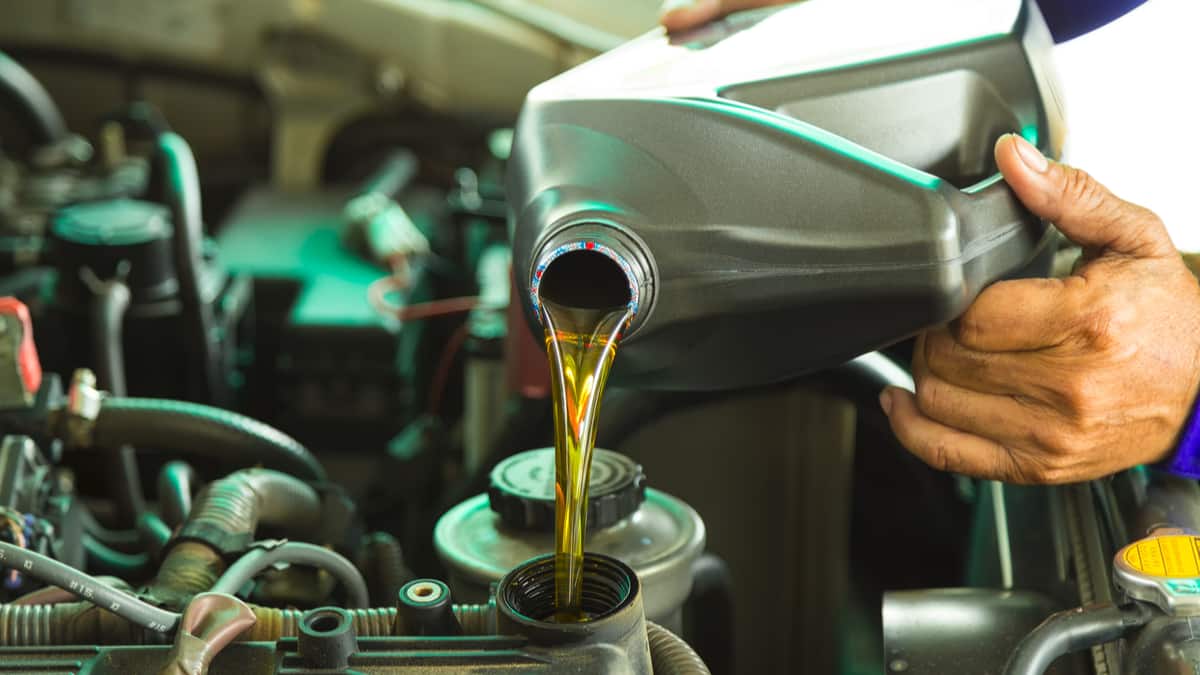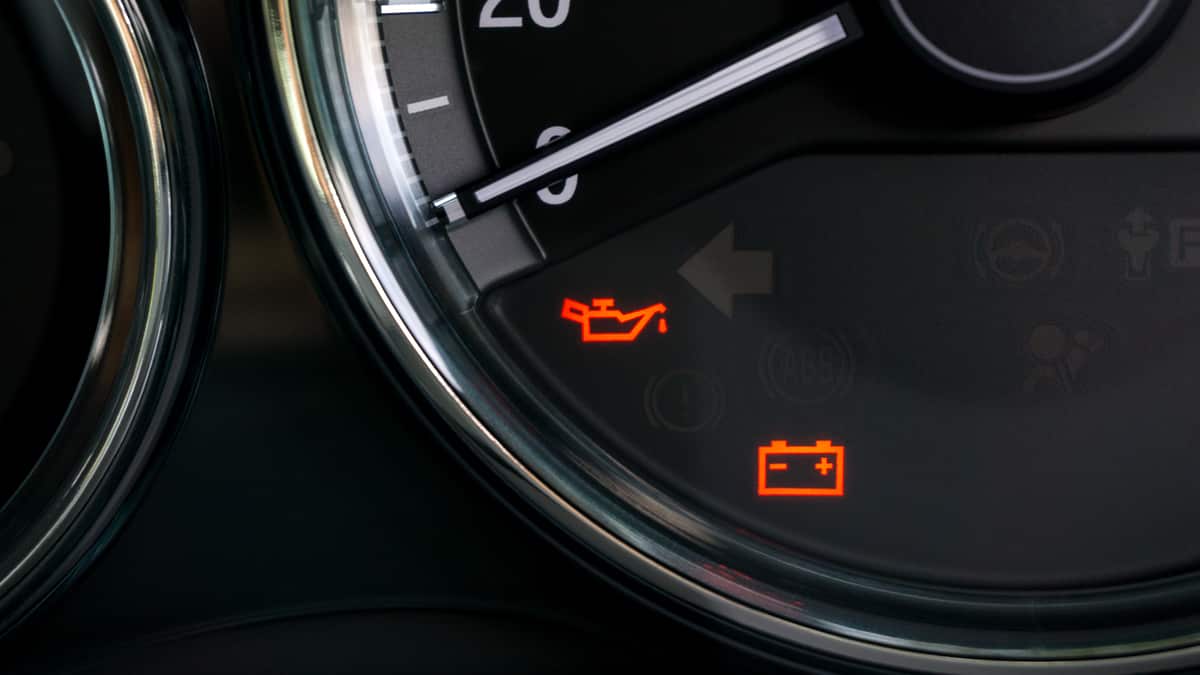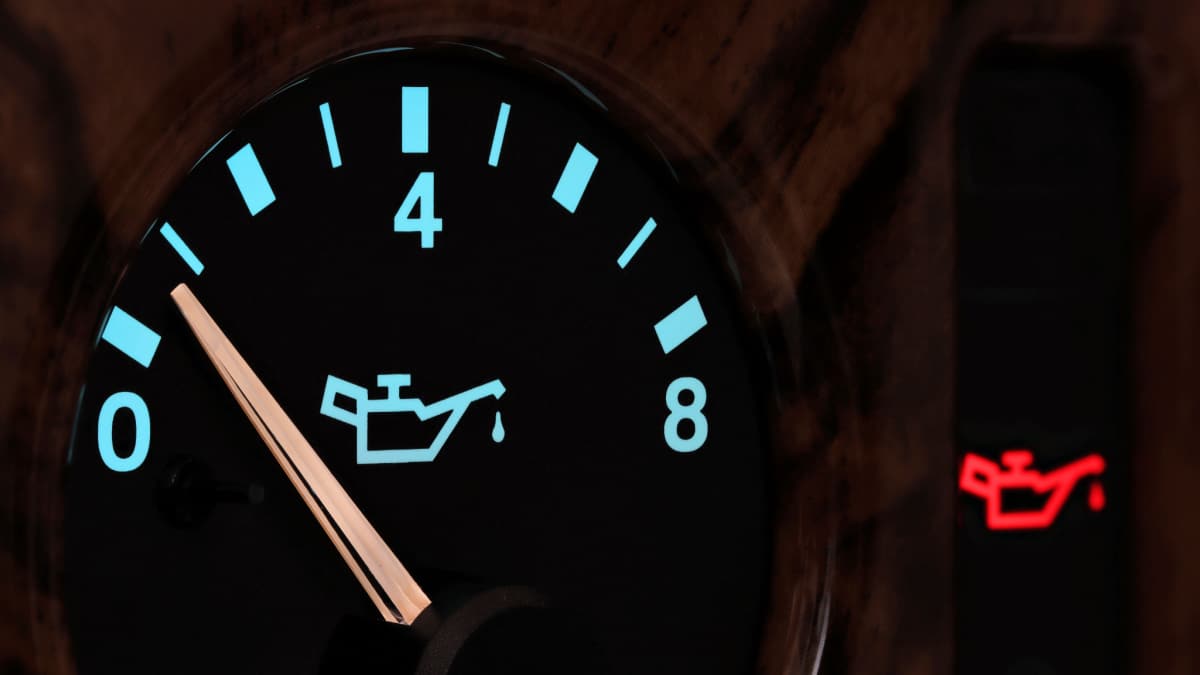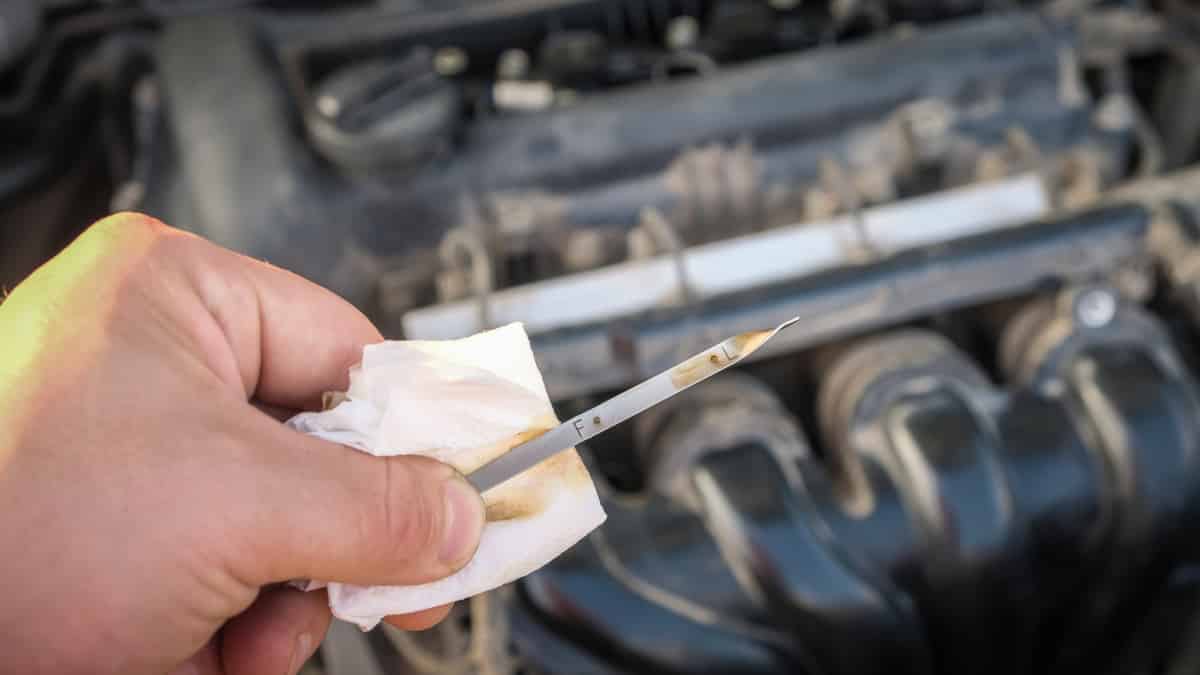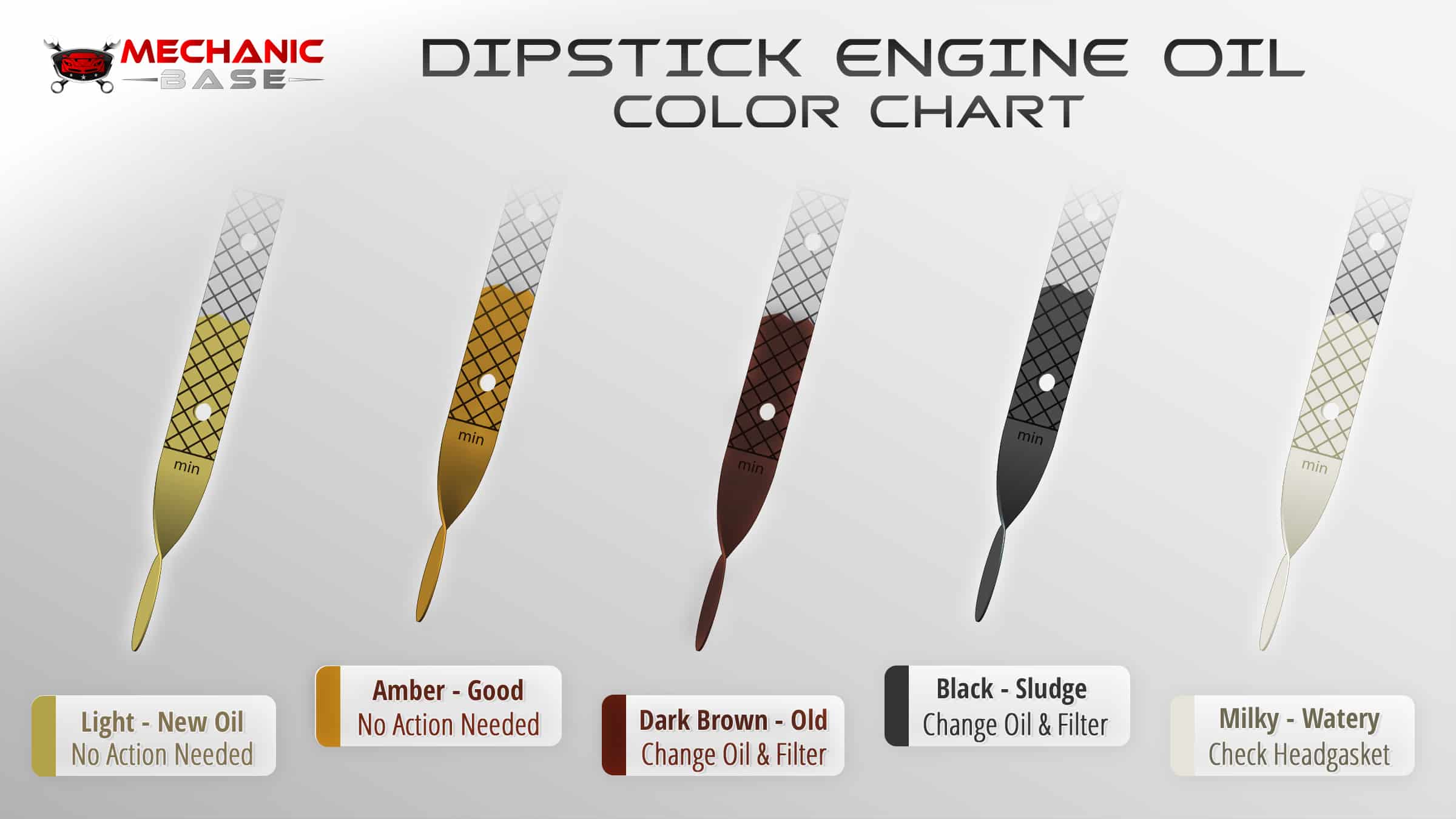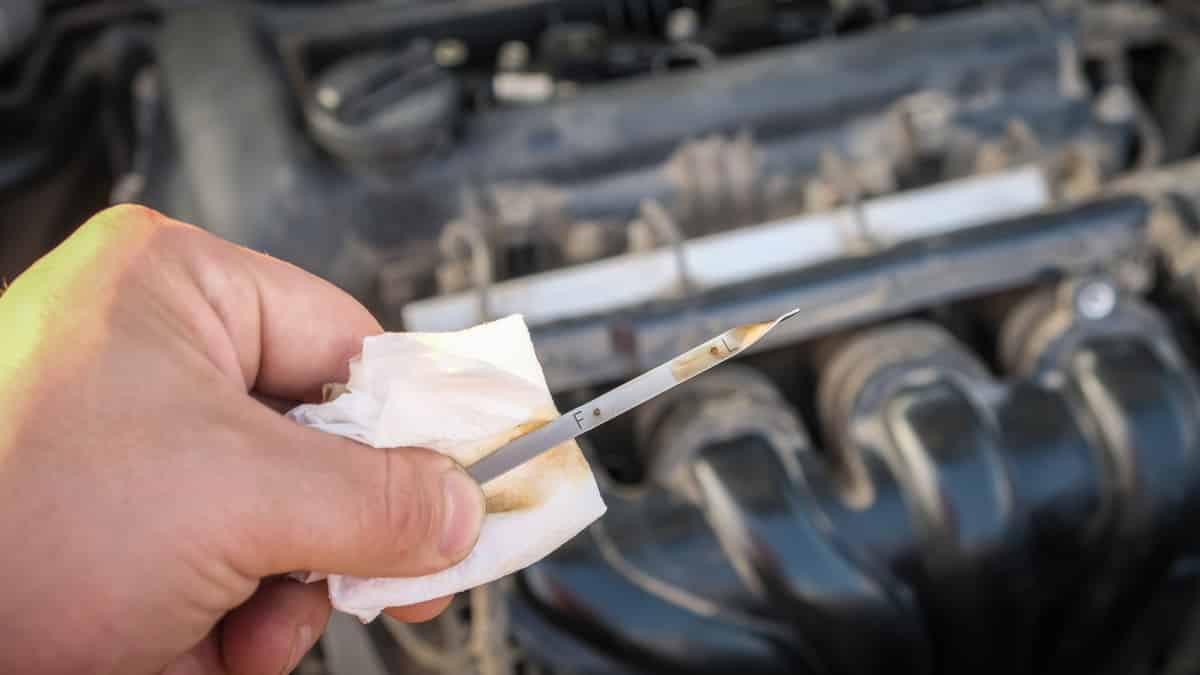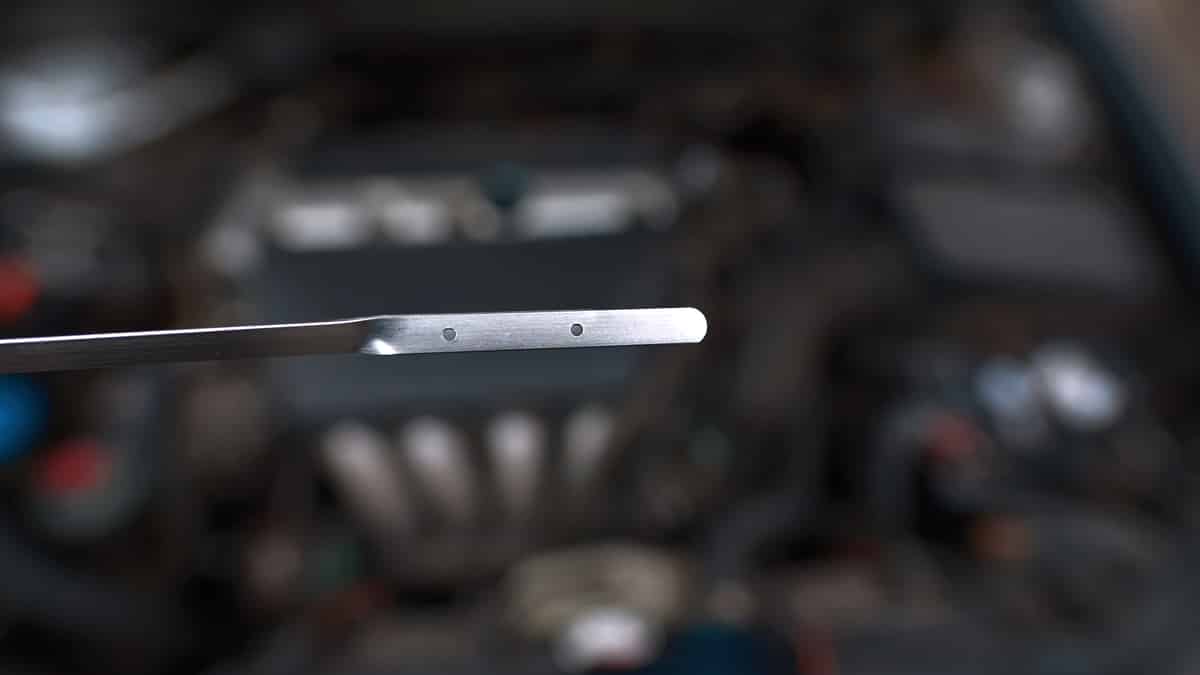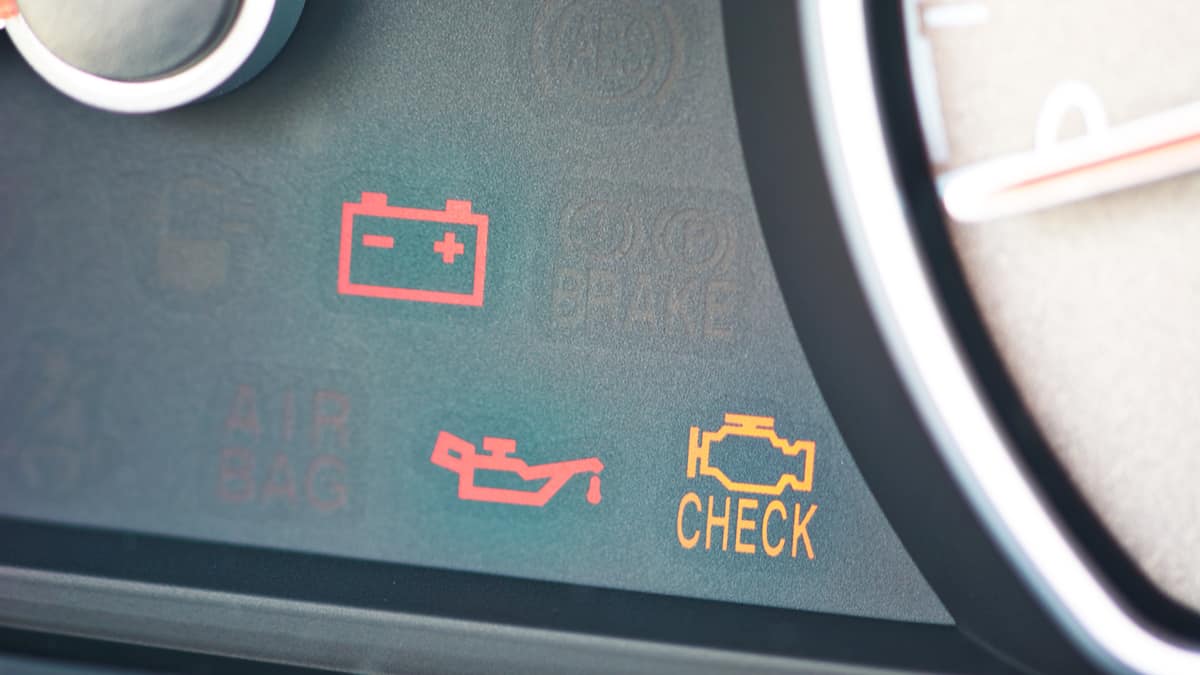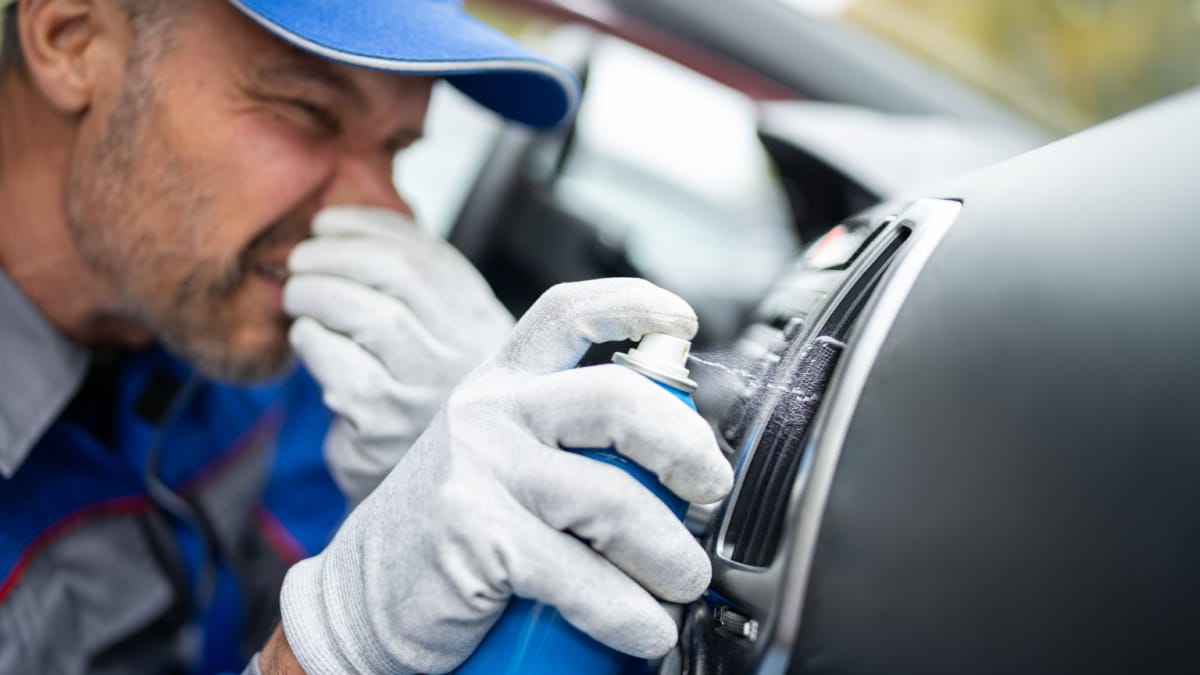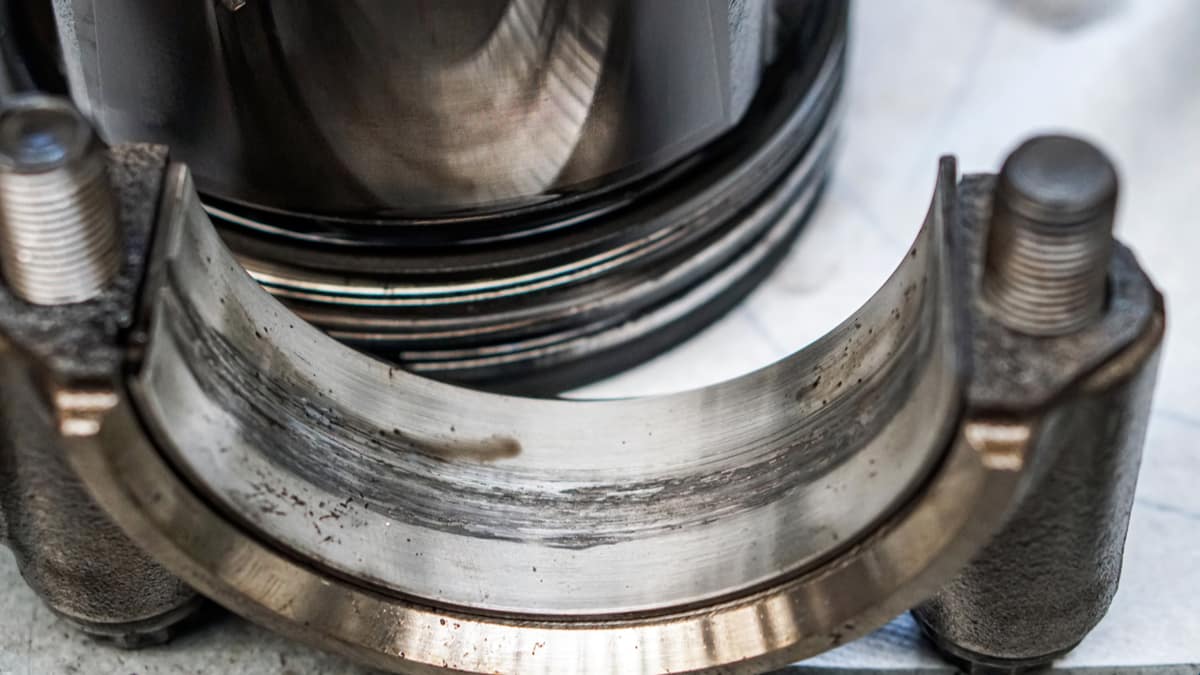Motor oil and gasoline both have distinct smells, so it’s alarming when the two seem to have mixed together. When oil smells like gas, it could be a sign of something wrong.
In this guide, we look at what causes the oil to mix with gasoline and we show you what to do about it. Additionally, we answer a few of your top questions since we have the mechanical expertise to deal with these problems.
What Causes Engine Oil To Smell Like Gas?
In normal circumstances, the motor oil shouldn’t smell like gas. This normally happens because of short driving distances or a lack of oil changes. It can also occur because of a rich fuel mixture, bad piston rings, a faulty fuel injector, or a failing carburetor.
Here is a more detailed list of why your oil smells like gas.
1. Frequent Short Distance Driving

During normal drives, gas can drip down to the oil pan. This isn’t anything alarming, as the gas vaporizes once the oil pan starts to heat up.
However, if you are only traveling short distances, the oil won’t ever get hot enough to vaporize the fuel. What you are left with is a gasoline smell.
2. Too Rich Fuel Mixture
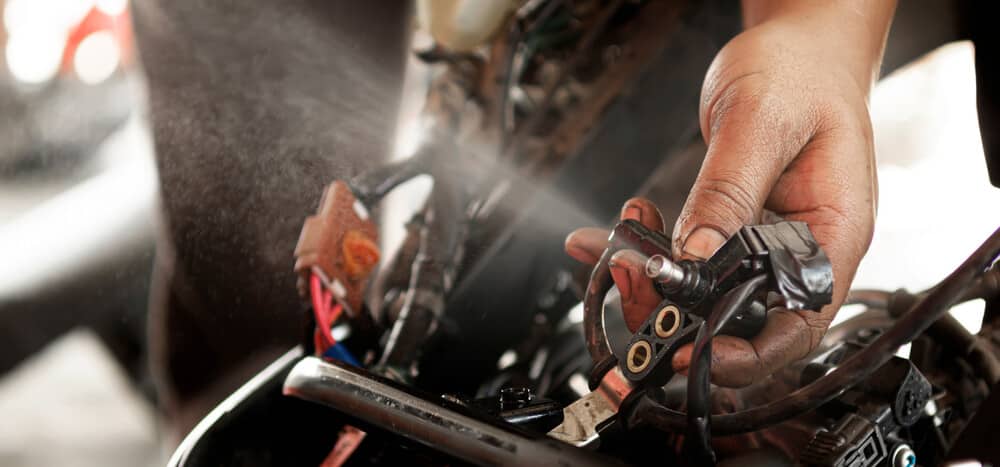
For combustion to occur, there must be a perfect balance between air and fuel. When there’s too much gas, it’s defined as a too rich fuel mixture. The opposite would be if there was too much air, which would be a too lean situation.
Problems with a sensor can be to blame. Your system relies on a multitude of sensors to balance the mixture. If the intake air temperature sensor, O2 sensor, coolant temperature sensor, mass airflow sensor or MAP sensor malfunctions, all of these can lead to a rich-running situation. As a result, the gas will build up on the oil pan as it seeps through the piston rings.
3. Bad Piston Rings

While we are on the subject of piston rings, you must consider what happens when these get damaged. If there’s even a small amount of damage to the rings, fuel can leak into the oil pan, leaving behind a fuel smell.
While the rings don’t become damaged too easily, this problem can be a bear to deal with. A compression test would be necessary, which we discuss in detail further down in the guide.
RELATED: 4 Symptoms Of Piston Rings
4. Faulty Fuel Injector

Today’s cars utilize fuel injectors that ensure the engine has the right amount of gas. A solenoid commands the injectors to regulate the flow and the computer calculates what’s needed.
Extra gas leaks into the oil when the solenoid gets broken. If it remains in an open position, gas will also leak and blend together with oil. The more it occurs, the stronger the gasoline smell is. Bad injectors can also lead to engine performance issues, even a possible misfire.
RELATED: 8 Symptoms Of A Bad Fuel Injector
5. Oil Change Not Done According To Schedule

Even under normal operating conditions, a small amount of gas can make it into the oil. There don’t need to be any major mechanical issues for this to occur. Because the fuel is minimal in the oil, you normally wouldn’t smell it.
However, if you aren’t performing regular service and changing the oil, the fuel smell can start to compound. What you are left with is a gasoline smell, along with dirty and contaminated oil. For this reason, it’s always best to follow the manufacturer’s recommended maintenance schedule outlined in the owner’s manual.
6. Faulty Carburetor (Older Vehicles)
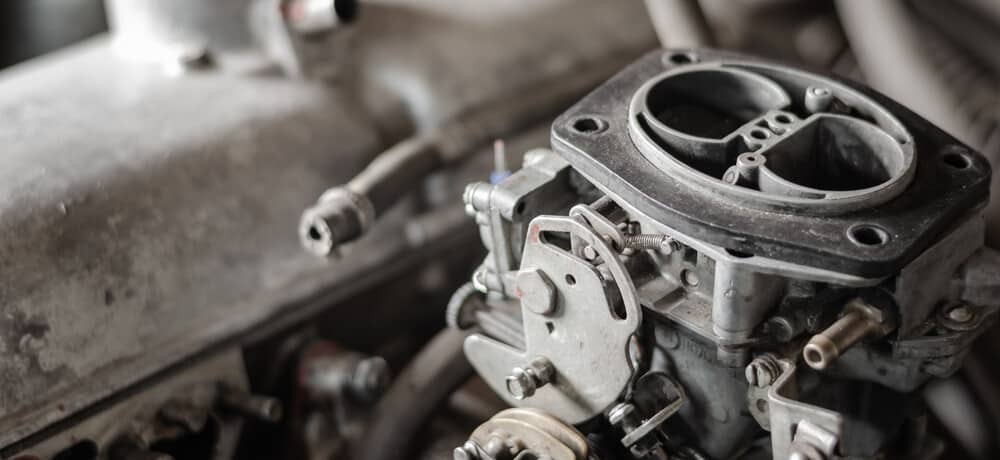
Today’s modern cars don’t have a carburetor, but once upon a time, they all came with one. If you have an older vehicle, you must consider that the carburetor may be to blame. If the motor oil starts to smell like fuel, the carburetor may be damaged.
Inside the carburetor, the float is responsible for allowing fuel into the engine. If the float sticks, too much fuel mixes with air. As the fuel makes its way into the oil pan, you will start to smell that gas stench.
How To Fix Oil Smelling Like Gas
Once you smell gas in the oil, it’s time to take action. Hopefully, the problem is nothing serious, allowing you to perform a quick fix and get back on the road. However, if you don’t resolve the situation, it could turn into something larger.
Here are the steps we would take as professional mechanics.
1. Drive More Often And For Longer

It’s important to start off by evaluating how you drive. Driving short distances isn’t good for the car and it can lead to a gas smell. To change this, consider combining trips, so you are out for a longer period at once.
You need to drive long enough for the engine to reach a higher operating temperature. That’s when the gas will start to burn out of the oil pan, so you no longer have that smell anymore.
2. Check Trouble Codes
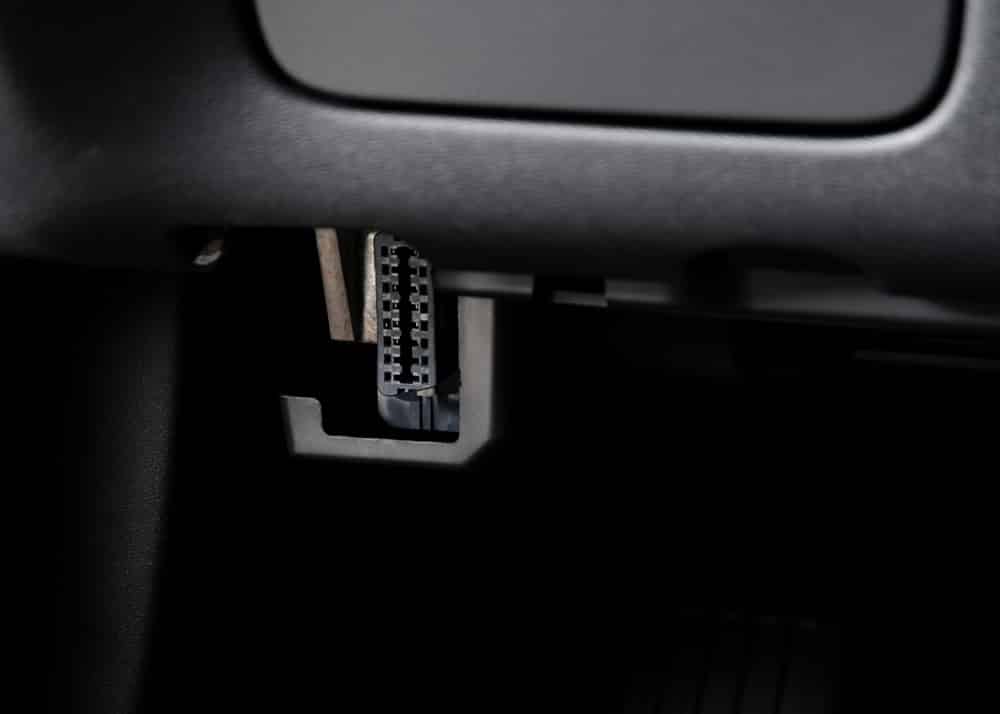
If there’s a Check Engine Light on, you want to read the codes to see what’s causing the problem. Plug in your OBDII scanner and see what codes show up. You may also use freeze frame data to determine what’s going on.
If you aren’t familiar with the DTCs, you can reference the information with our online code library. Perform whatever fix seems relevant and reset the codes to see if the problem resolves itself. If not, you should continue working through our steps.
3. Check Compression
An engine compression test checks the pistons’ and valves’ ability to compress the air and fuel mixture. You don’t need a lot of mechanical experience to perform the test, but you will need some specialized tools.
Here are some basic steps to follow.
- Gather your equipment: You don’t want to search for your tools after you get started. You can rent one locally if you don’t have a compression tester.
- Disable fuel/ignition: The engine cannot run during the testing. Older vehicles with a distributor can be disabled at the coil. Fuel-injected cars need to be disabled at the fuel system. Look in the owner’s manual to find the fuel pump fuse and remove it.
- Take out the spark plugs: During the testing, you don’t want compression strokes hindering the spinning.
- Start the test: Hook up the compression testing tool. Spin the engine at least six times for the gauge to read properly. Keep your hands clear of all pulleys and belts.
- Record your readings: Write down the readings as you go for reference. Most gas engines have a compression between 125 and 175 PSI.
- Evaluate the reading: If one reading is lower than the others, there might be a problem with a cylinder. If you have several lower numbers, other engine issues may be present.
Remember to hook everything back up after the compression test. If you’ve disabled the fuel or ignition system, it’s time to put it back together.
4. Change Engine Oil
If it’s time to change the oil, you may consider seeing if this fixes your problem. Most cars with conventional oil need to be changed every 3,000 miles. If you use synthetic motor oil, you may be able to go 7,500 miles or more. Check the service schedule for your particular car model to get accurate information.
Here are some basic steps to consider.
- Jack up the car and secure it on jack stands.
- Place an oil drain pan under the oil plug and open it.
- Allow the oil to drain out completely.
- Remove the old oil filter.
- Put the drain plug back in.
- Install the new oil filter.
- Fill the system back up with oil.
- Check the levels and top off as needed.
It’s also important to check for leaks. If you notice any leaks, you want to fix them before the problem gets worse.
5. Contact A Professional
If you need to find a mechanic, talk to your family and friends to see who’s recommended. The Federal Trade Commission also recommends asking to see current licenses from the mechanic.
You may have to pay for the diagnostics, but the shop should give you a detailed estimate before performing a bunch of repair work. Sometimes, it’s just better to pay this bill versus banging your head against the wall trying to figure out what’s wrong.
Does gas in the oil damage the engine?
In small amounts, gas in the oil won’t hurt the engine. However, if there’s an excessive amount of fuel in the oil, it can reduce the viscosity. With thinner oil running through the motor, the internal parts don’t get the lubrication needed and there’s minimal protection, leading to a higher chance of damage.
How do you know if gas is in your oil?
The most obvious symptom is the smell of fuel in the oil. You may also see white smoke coming from the exhaust and the oil pressure gauge may read slightly lower. Finally, if the oil level is rising without you adding more, it could be due to fuel leaking into the system.
How do you test for gas in the engine oil?
The sniff test may be all that’s needed. If you smell gas in the oil, it’s probably present. You can also put a few drops of the oil from the dipstick on a piece of cardboard. If there’s any gas in the oil, two rings will appear on the cardboard within minutes. The outer ring is the fuel with the oil in the middle.
What happens if gas mixes with oil in the engine?
Nothing will happen from a small amount of gas in the oil. However, when there’s lots of fuel in the oil, viscosity is reduced. With thinner oil, the internal parts receive less lubrication, so there’s minimal protection, leading to a higher chance of engine damage.
How do you remove gas from oil?
First, you have to figure out what’s causing the problem and fix it. There’s no sense in doing anything else until you stop the flow of fuel into the oil. Once that’s done, you can change the oil and filter. With fresh oil in the motor and the problem resolved, you shouldn’t notice any more fuel infiltration.
As professional mechanics, we are constantly dealing with strange smells coming from vehicles. One that always catches our attention is the smell of fuel in the oil. These two substances aren’t made to be mixed together, so quick action is required.
If you can repair the problem on your own, go for it. We always encourage saving money by avoiding a visit to a repair shop. However, if you aren’t familiar with these systems or you are unsure how to fix them, you should visit a local mechanic. A lot can go wrong when you work with the engine, so don’t take any chances.
Categories: Engine Oil, Troubleshooting

